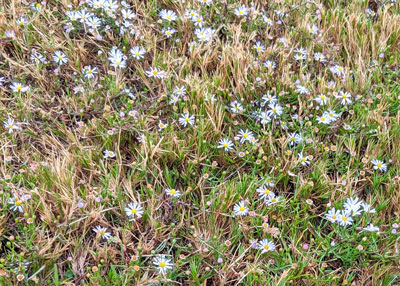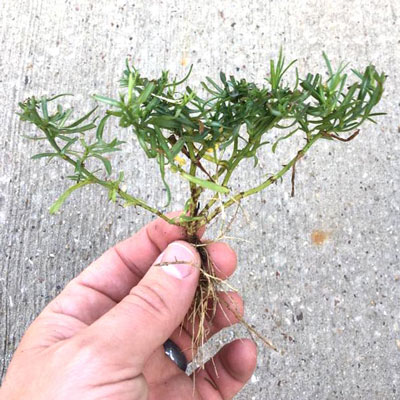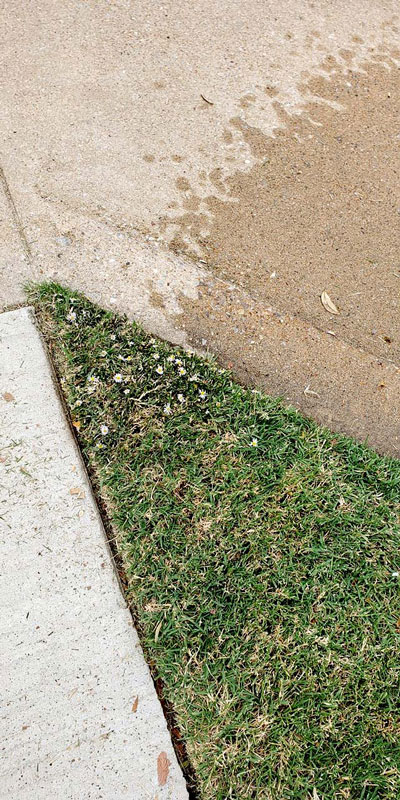Question of the Week – Number 1: October 21, 2021
“What is this weed, and what can I do to control it?”

As pretty as this little weed is, there’s a lot more to the story.
What you need to know…
• Roadside aster.
• Annual, broadleafed weed, in spite of the fact that it has tiny leaves.

• Grows to be 3-6 inches tall and 6-10 inches wide, but can grow and bloom at even closer mowing heights.
• It germinates in the spring, but its stems and leaves are so wiry that you may not even notice it until its blooms start opening in fall.

• I refer to this as a “weed of neglect.” It shows up where turf has been under-maintained. It’s often “out back by the alley” or “way out front near the walk.” Those are places where it’s most difficult to get water and fertilizer. The grass is weaker and the weed gets a start.
• As a result, the best control program may be nothing more than ramping up your lawn maintenance efforts. Fertilize and water more often and more precisely. Mow more often and at the recommended lower height so that your turfgrass will stay low and dense.
• If you see tufts of the weed developing during the late summer and early fall you can apply a broadleafed weedkiller spray according to label directions. Even though this plant has tiny leaves, it is obviously not a grass. Therefore, the broadleafed herbicides will kill it. Use a tank sprayer for most precise results, and read and follow label directions exactly.

• As for whether this is an attractive wildflower, that answer is “No!” It’s only in bloom for a couple of weeks. After that time its stems turn black and very stubbly. You really don’t want it around.
